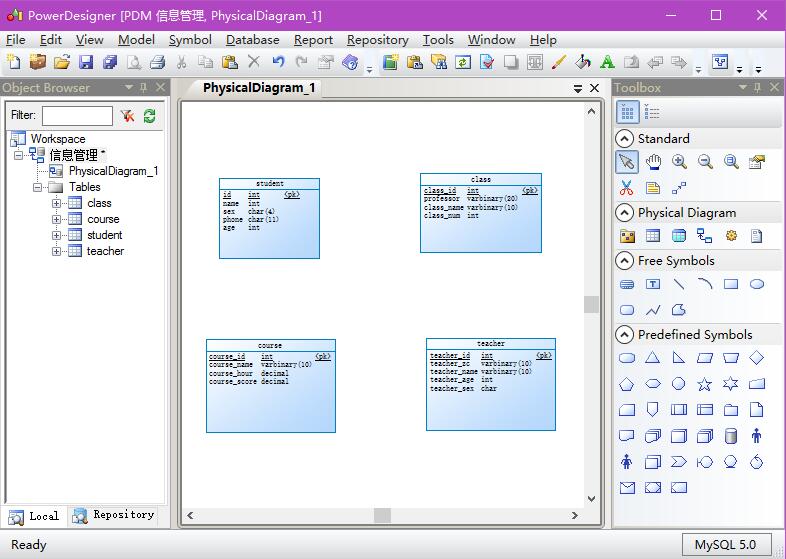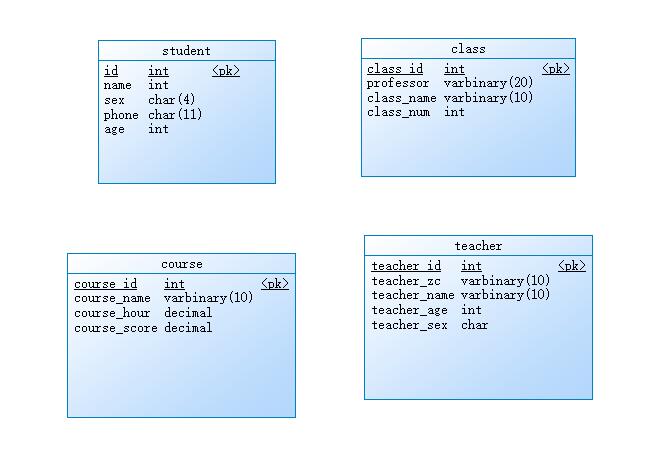
The information system needs to go through four stages from project establishment to online operation: demand analysis, system analysis, system implementation, and maintenance.
Basic steps of database design:
1. Requirements collection and analysis
2. Conceptual structure design
3. Logical structure design
4. Physical structure design
5. Implementation, operation and maintenance
ER Diagram:
Entity-Relation Diagram is used to establish a data model. It belongs to the conceptual design stage in the introduction to database systems. ER Graphs provide a way to represent entities (i.e., data objects), attributes, and relationships to describe conceptual models of the real world.
The basic elements that constitute an E-R diagram are entities, attributes and relationships. The representation method is:
Entity type: represented by a rectangle, with the entity name written in the rectangular box ;
Attributes: represented by ellipses or rounded rectangles, and connected with corresponding entities by undirected edges; multi-valued attributes are connected by double lines; add under the name of the main attribute Underline;
Contact: represented by a diamond, the contact name is written in the diamond box, and undirected edges are used to connect it to the relevant entities respectively, and the type of contact is marked next to the undirected edge.
The 1-to-many relationship, 1-to-1 relationship and many-to-many relationship should be clearly stated in the E-R diagram.
For a 1-to-1 relationship, write 1 in the direction of the connection between the two entities;
#For a 1-to-many relationship, write 1 on one side of 1, many Write N on one side; Picture:

##The above is [MySQL 13] Regarding the content of database design, please pay attention to the PHP Chinese website (www.php.cn) for more related content!





